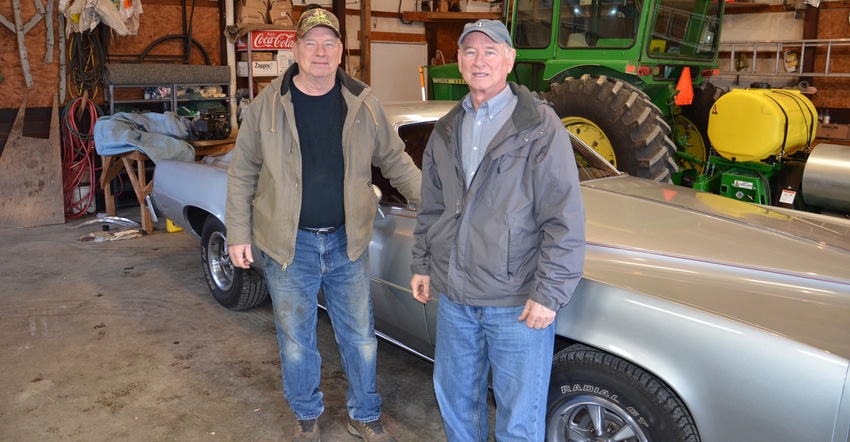
Little things matter. You don’t have to sell Richard and Steve Fellows on that concept. They’re true believers.
“Our father, Ray, used to say that ‘If you take care of the little things, the big things will take care of themselves,’” says Richard Fellows, New Washington, Ind. “He was 100% correct. Especially today, when crop margins are very tight, if you want to have profit left after the season, you can’t afford to make mistakes that cost yield.
“You make a lot of crop decisions in a year’s time. Sometimes it’s the little decisions, such as which setting to use, that trip you up. We’ve just got to make sure that we do our best to get those small details correct,” he says.
The Fellowses are believers in technology too. They drill soybeans with a John Deere 4440 tractor and 15-foot no-till drill. The tractor has been retrofitted with hydraulic autosteer so they can make every pass as precise as possible.
Sometimes, however, small errors in a setting, even pushing the wrong button or forgetting to reset the computer controls for a different type of application, can result in a costly mistake, Fellows says. He’s seen it happen, and he urges everyone — farmers and applicators — to pay close attention to settings when using technology.
Tough example
In 2017 the Fellows brothers hired nitrogen applied over their wheat in late winter. They strive for high-yield wheat every year. “We need the bushels if we’re going to bring in enough income to more than offset expenses,” Fellows says.
As harvest approached, they noticed that wheat on the row ends was going down. It appeared to be a case of too much nitrogen. When growing conditions are good, too much nitrogen can increase lodging in wheat and make it extremely difficult to harvest, even with modern grain tables.
Nitrogen was applied with 120-foot booms. One pass across the end of the field with a 120-foot boom covers a lot of territory, Fellows says. “It adds up to more acres out of the field than you would think,” he adds.
“We had trouble harvesting those ends where the wheat was down. We couldn’t get all of it, and we know that when you factored it across the field, it pulled the average yield down,” he says.
What caused the wheat to lodge? They determined it was too much nitrogen on the ends, as Fellows suspected. Even with all the automatic on-and-off technology available on today’s application equipment, it only works if it’s set correctly.
Apparently, the applicator wasn’t set to turn off on the ends during each pass, Fellows says. The ends received a double rate of nitrogen. Besides increasing the nitrogen bill, it meant more nitrogen on those areas than the plants could handle. That led to lodging and much higher harvest losses than normal.
“Technology is great, but we still have to pay attention to those little details, such as setting it correctly,” Fellows concludes. “Otherwise, we end up with mistakes that eat away at the bottom line.”
About the Author(s)
You May Also Like




